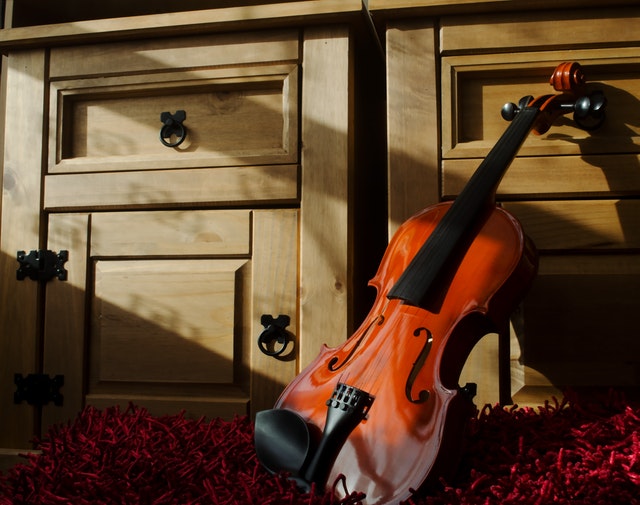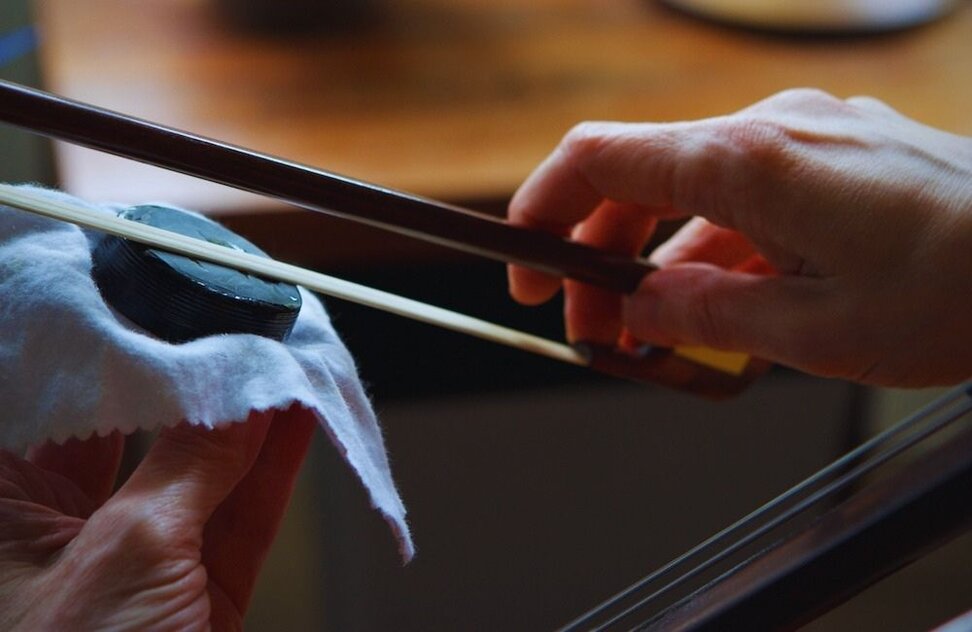There’s a belief around that violins improve over time and age. So it’s an urge of a violinist to keep the violin he or she has as long as possible by taking good care. A violin can survive more than a hundred years. It doesn’t have to be a Stradivari or Guarneri or Amati violin, any violin can play that long if given proper care. While talking about good care of the violin, most of us don’t even know or have the exact proper information on how to take care of a violin. To ensure a long living life for your violin just wiping out the dust of the violin is not even nearly enough. It requires quite a lot of time to take good care of your violin.
The anatomy of a violin to care regularly

Before getting your hands dirty in taking care of a violin you should thoroughly know about all the parts of a violin. Apart from a bow and some strings the violin also consists of a fingerboard, a bridge, a soundpost and various fittings. The most important and yet the most negligible part of the violin that protects it from the outside surroundings is its case. There are several more parts of the violin but those parts do not require that much of a special care like the parts mentioned already. But to keep your violin safe and sound by taking care, observe these mentioned parts on a regular basis.
Tips on How to Take Care of Your Violin
Advice for the beginners
This is the foremost and the most essential advice to take care of your violin and that is, ‘Never tune the stringed instrument yourself’. You are a newbie in using the violin and didn’t have enough experience in the tuning of a violin, go to your mentor or teacher and have him or her do the tuning of the violin. Don’t try it even if you have a lot of theoretical knowledge about your instrument, trying by yourself you could get your new violin damaged instead of giving a somber sound trying to tune it by yourself.. So during your first few months just have fun playing your violin and learning. If it needs to be tuned there are specialists around you to help and gradually you’ll learn it yourself from them.
Safeguard with a good quality violin case
Having a good quality violin case is the first and foremost step to take care of your violin. A good variety of violin cases is available in the market, try to get the case with qualities like durability and made of more than average quality materials.
A good violin case is also a safeguard for your violin in case you are going to travel with it. It is also important to ensure that the case has a lot of filling to avoid scratching the violin. Padding should provide cushioning for the violin and will not severely rub the varnish.
Always be protective of your violin

Violin can be really delicate in many favourable environments that you can never imagine.
For example humidity is a factor while taking care of your violin. Sudden change of humidity or exposure to intense temperature both hot or cold may cause your instrument to crack. Always ensure a good quality violin case to protect your violin. Even for your cheapest violin make sure you invest a good amount in its case. The violin case should have a lot of padding to ensure cushion of the violin and to keep it scratch free. Moreover, always remember to secure the lock of the bow before closing the case.
Cleaning your violin
People are likely to make mistakes while cleaning their violin since they do not know the do’s and don’ts of the rules of cleaning a violin. The golden rule that goes a long way is to wipe the violin after every time you play it. The wiping material should be a microfiber cloth or a cloth designed for this special purpose only. It is recommended to use one cloth not more than three or four times for cleaning a violin.
Be careful of the rosin dust in your violin. Take a lint-free soft cloth to dust off the rosin from your violin. Sometimes there might be a significant amount of rosin dust on your violin because of using the violin for a long period of time. In such cases wiping with a soft cloth will not suffice the situation and the best advice would be to consult a specialist.
Never use solvent to clean violin
Always use cleaners and polishes that are especially made to clean a violin instrument. Do not get overwhelmed with a lot of choices in cleaners at the market. Remember that cleaners without polishes should be used on a regular basis as they are kind to the instrument and wipe off any small and light dirt. However cleaners with polishes have a significant role in dusting off the stubborn dirt but may also harm the instrument. Whatever the case may be, never use furniture polish or alcohol to clean your violin.
Taking care of the bow
- The use of rosin: Use rosin on the bow and strings of your violin before you start your music. But remember that putting an excess amount of rosin on the bow may result in way too much friction than necessary. This will at the end produce a harsher sound than expected. Moreover, excess rosin may easily damage the bow hair and re-hairs are really expensive.
- Taking care of the bow hair: It is a good practice to slightly loose the bow hair after playing. This will preserve the bow stick arched shape. Whatever you do, never touch the horsehair on your violin bow. The horsehair has a tendency to make a reaction with the oil of your skin resulting in its own damage.
Inspect yourself before touching your instrument

Before taking care of your violin make sure that you yourself is well fitted to do the job. Trim your nails and clean your hands before holding the violin. Do not use sweaty hands to touch your violin. However if you have sweaty hands it is best to pick it up by the neck and chin rest. Always do a regular checkup of your violin to a luthier, the ones that are experienced in taking care of a violin.
Taking care of the small details
There are a lot of small but of course not petty details that we ought to miss while using our violin. For example, the violin fitting like tuning pegs, chinrest and tailpiece should be appropriately fitted. Replacing bow hair and strings might seem expensive and is not necessary if you do not play your violin regularly. However, after an adequate amount of time investing on your violin you need to think about bow re–hair and changing the violin strings. Check the sound post of your violin always to ensure that it is in the correct position. If you think that the sound post has fallen, it is the time to see luthier.



